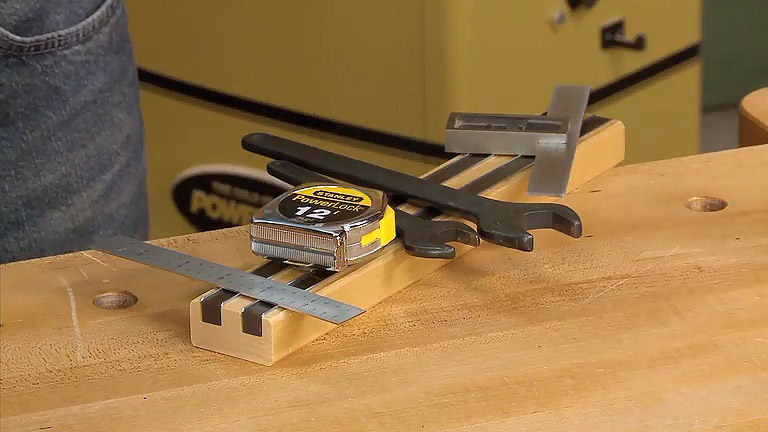The key to getting great results with a thickness planer is making sure the knives are clean, sharp, and well-adjusted. Swapping out dull knives for new ones might seem troublesome, but if you take a few minutes and follow some simple steps, you can be certain to get glass-smooth cuts every time. The first step is a good cleaning. Quite often, loose chips and debris can get stuck to the feed rollers and cause dents in the workpiece. Or a chip can get lodged in the cutterhead and bow the knife. I start by unplugging the planer and opening it up as much as possible. A few blasts of compressed air makes quick work of blowing out the loose debris. Follow the initial cleaning with some spray solvent, brushes, and rags to loosen any caked-on grime. Just be careful while you do this. Dull planer knives are still sharp enough to cause a nasty cut so I like to wear a pair of reinforced carving gloves when I’m working.

The next step is to remove the old knives. Most planers have a mechanism that locks the cutterhead while you change knives. You’ll need to rotate the head until it locks in place. Instead of loosening the bolts with the small Allen wrench that came with my planer, I’ve switched to a long, T-handled wrench. The cushioned handle is more comfortable and more importantly, the added length keeps my fingers safely away from the knife. When the bolts are backed off, you can pull the knife out. Your planer may have a magnetic tool to help you do this, but some don’t work all that well for this task. A better “tool” is often a paper clip.

Once the knife is out, you may find chips packed in the knife bed. Clean this area out before moving on. Reversible knives can simply be flipped end for end and reinstalled. I like to mark the used edge with a marker so that I know later when I need to get a new set of knives. If new knives are required, you can then slip the knife in place with the magnetic tool until it seats in the correct position. (The tool usually works great for this.) Most newer knives are indexed so getting them set in the correct position is a pretty foolproof operation.

The final step is to tighten the bolts. You don’t want to try and lock the bolts down tight in one pass. It’s possible this could cause the knife to bow. Start by snugging up the center bolts just enough to hold the knife in place. After working your way out to each end, go back with two or three more passes. With each pass, tighten down the bolts a little more. From here, you can repeat the process on the other knife in the cutterhead. The payoff comes when a rough board comes out glass smooth.











